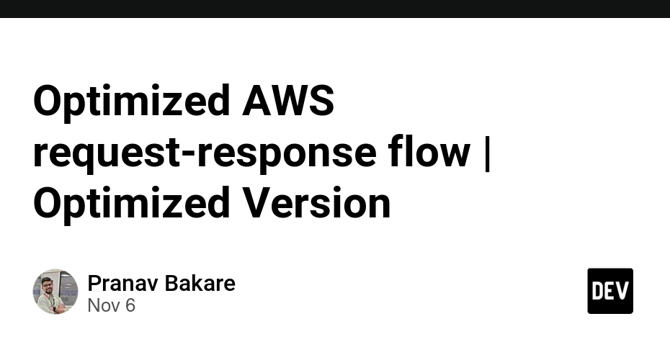Dev
1w
196

Image Credit: Dev
Optimized AWS request-response flow | Optimized Version
- An optimized AWS request-response flow can be designed with scalability, security, cost-efficiency, and reliability as primary considerations.
- Route 53 directs users to the closest endpoint, reducing latency by geolocation and latency-based routing.
- CloudFront caches and serves static and dynamic content globally to reduce load on backend servers.
- Use AWS WAF rules to block unwanted traffic, reducing costs by filtering malicious requests early.
- API Gateway manages and secures API calls, including throttling and caching.
- AWS Lambda serves as an ideal option for microservices and event-driven applications to scale automatically.
- Use Auto Scaling Groups (ASG) for EC2 instances to dynamically adjust capacity based on load. Leverage Spot Instances for cost-savings where possible.
- Use AWS Fargate (serverless compute for containers) with ECS or EKS for microservices to avoid managing the underlying infrastructure.
- Enable DynamoDB Auto Scaling to handle traffic fluctuations. Use DAX (DynamoDB Accelerator) to improve response times for read-heavy applications.
- Use S3 Transfer Acceleration for faster uploads globally, especially for user-uploaded content.
Read Full Article
11 Likes
For uninterrupted reading, download the app